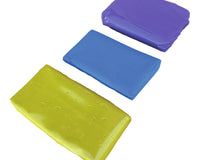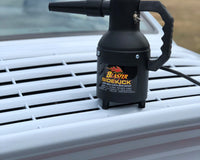Windshield polishing and glass nano coating have become essential aspects of modern car detailing, particularly for drivers who value clarity, safety, and long-term protection. The windshield is one of the most critical safety components of any vehicle, yet it is often overlooked in regular maintenance. Over time, windscreens are exposed to road debris, dust, water spots, tree sap, hard water stains, bird droppings, and micro scratches caused by wiper blades. These imperfections reduce visibility and compromise safety during day and night driving. This is where professional windshield polishing and nano coatings step in to restore clarity and add a durable layer of protection. By combining polishing to remove imperfections and nano coatings to add hydrophobic, dirt-repelling properties, motorists can enjoy improved driving safety and reduced maintenance efforts. The right combination of polishing and coating not only improves aesthetics but also provides enhanced performance, making this process vital for detailers and car owners alike.
Why Windshield Polishing is Important
Windshield polishing is far more than an aesthetic process. Unlike a quick clean or wipe, polishing involves using specialised techniques to remove embedded contaminants and restore the surface of the glass. Over time, fine scratches develop due to sand, dirt, and worn-out wiper blades dragging across the glass. These scratches scatter light and cause glare, especially during night driving or when facing oncoming headlights. Polishing eliminates or reduces these marks, ensuring the glass surface becomes smooth and clear again. Polishing also removes mineral deposits left behind by rainwater, car washes, or sprinklers, which often appear as stubborn white spots that do not wash off with ordinary cleaning. By restoring optical clarity, drivers benefit from enhanced safety and comfort, particularly in poor weather conditions where every fraction of visibility counts.
Understanding Glass Nano Coating
Glass nano coating is an advanced protective layer applied to windshields and other vehicle glass surfaces. Unlike conventional sealants or waxes, nano coatings work at a microscopic level, bonding to the surface of the glass to create a hydrophobic barrier. This means that rainwater, mud, and grime no longer cling to the windshield but instead bead up and roll away. These coatings are made from silicon dioxide (SiO₂) or other advanced polymers designed for long-term durability. The hydrophobic properties improve visibility during heavy rainfall, reducing reliance on wipers and providing a safer driving experience. Nano coatings also protect against UV rays, road grime, and chemical contaminants, preventing the glass from deteriorating prematurely. For drivers in regions with heavy rain or harsh sunlight, nano coatings have become an increasingly popular solution for convenience, performance, and safety.

Benefits of Windshield Polishing and Nano Coating
The combination of polishing and nano coating offers multiple benefits, both immediate and long-term. Firstly, polishing restores visibility by removing scratches, hard water stains, and mineral deposits, giving the glass a like-new appearance. This is particularly important for older vehicles where the windshield has accumulated years of wear. Secondly, nano coating ensures that the freshly polished glass stays cleaner for longer. The hydrophobic effect prevents water from spreading across the surface, dramatically improving visibility in rain and reducing glare at night. Another significant benefit is reduced strain on wiper blades. Since contaminants and water slide off easily, wipers last longer and perform more effectively. Additionally, nano coatings make cleaning much easier. Dirt, insects, and other residues do not adhere as strongly, so a quick wipe is often enough to maintain a spotless windshield. Over time, this saves car owners money and effort in maintenance while preserving safety and aesthetics.
Step-by-Step Overview of the Process
Polishing and coating the windshield involves several important stages that ensure maximum results. The process begins with a thorough cleaning of the glass to remove dirt, oils, and residues that could interfere with polishing. Next, fine abrasives are used to polish the surface, removing scratches, etched marks, and water stains. This is often done with specialised polishing pads designed for glass rather than paint. Once the polishing stage is complete, the surface must be carefully cleaned again to remove any polishing residue. At this point, the windshield is ready for the application of a nano coating. The coating is applied evenly across the glass and allowed to bond for a set curing time. This bonding ensures long-lasting protection that cannot be washed off by rain or car shampoos. With the coating fully cured, the windshield is transformed into a water-repellent, crystal-clear surface that enhances driving safety and aesthetics.
Long-Term Protection and Maintenance
One of the biggest advantages of glass nano coatings is their durability. Depending on the product and conditions, a high-quality nano coating can last from six months to over a year before needing reapplication. During this period, maintenance becomes significantly easier. Instead of constant scrubbing or heavy cleaning, drivers can maintain a clear windshield with light washing and occasional touch-ups. However, to maximise the life of the coating, it is important to avoid harsh chemicals or abrasive cleaning methods that can strip away the protective layer. Polished and coated windshields are also more resistant to scratches, meaning they retain their clarity longer compared to untreated glass. Regular inspections are recommended to ensure the coating is still effective, especially before long journeys or in preparation for seasonal weather changes.
Common Myths About Windshield Polishing and Coating
There are several misconceptions about polishing and nano coating that need to be addressed. One common myth is that polishing weakens the glass by removing too much material. In reality, professional polishing only removes microscopic layers to restore clarity without affecting structural integrity. Another misconception is that nano coatings are just expensive versions of rain repellents. Unlike temporary sprays, nano coatings chemically bond to the glass, offering far greater durability and effectiveness. Some drivers also believe coatings eliminate the need for wipers altogether. While coatings significantly improve visibility and reduce reliance on wipers, they do not replace them entirely, especially during heavy storms. Understanding the reality behind these myths helps car owners make informed decisions about investing in proper windshield care.
The Role of Professional vs DIY Application
Many car owners debate whether to attempt polishing and coating themselves or to seek professional detailing services. DIY kits are available and can deliver decent results when applied carefully. However, achieving a flawless finish requires the right tools, knowledge, and patience. Polishing glass improperly can cause swirl marks or leave residues that interfere with coating performance. Professionals have access to high-grade equipment, better quality coatings, and the expertise to apply them effectively. For those who prioritise convenience and long-lasting results, professional services may be worth the investment. On the other hand, DIY enthusiasts who enjoy working on their cars can achieve satisfactory outcomes by following instructions closely and using proper techniques. The choice often depends on the individual’s skill, budget, and desired level of finish.
Final Thoughts - Windshield Polishing and Glass Nano Coating
Windshield polishing and glass nano coating are not just cosmetic treatments; they are practical solutions that enhance safety, visibility, and long-term vehicle care. Polishing removes scratches, stains, and imperfections that compromise clarity, while nano coating adds a durable hydrophobic barrier that repels water and dirt. Together, they transform the driving experience by improving visibility in rain, reducing glare, and making maintenance easier. For car enthusiasts and everyday drivers alike, this combination is one of the most effective ways to extend the life of a windshield while ensuring maximum driving safety. As detailing technology advances in 2025 and beyond, these treatments will continue to gain popularity among those who value performance and aesthetics in equal measure.




